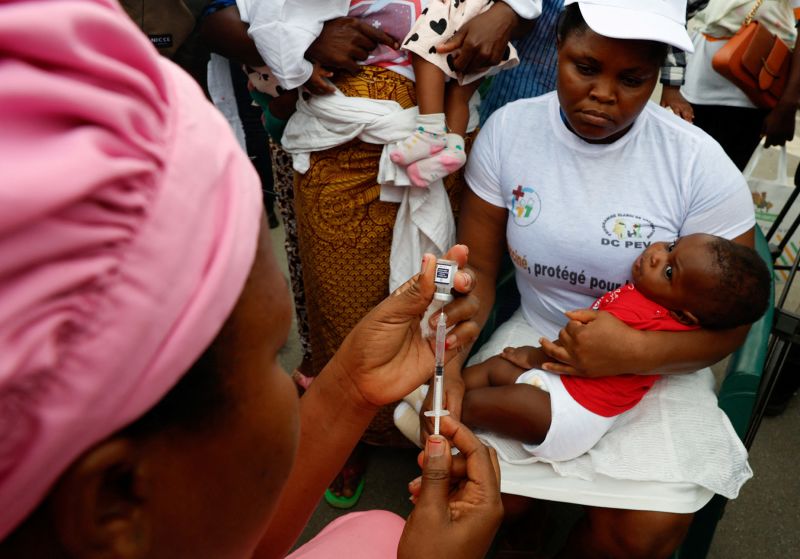Children in Ivory Coast received the first doses of a new, relatively cheap malaria vaccine on Monday, a step that has been hailed as a major milestone in the battle against one of the world’s most deadly diseases.
The vaccine costs less than $4 a dose, making it “realistic to roll out in many tens of millions of doses from now on,” and it has high efficacy levels of around 75%-80% in young children, Professor Adrian Hill, director of the Jenner Institute at Oxford University, who led the development of the vaccine, said in an interview with BBC Radio on Monday.
Up to 500,000 child deaths could be saved every year with the widespread implementation of R21, alongside its counterpart RTS,S vaccine, according to modeling by the World Health Organization (WHO).
Spread by some types of mosquitoes, malaria is preventable and curable but still killed around 608,000 people around the world in 2022, according to WHO. About 95% of those deaths occurred in Africa, where children under the age of 5 account for around 80% of all malaria deaths across the continent.
The SIII has already manufactured more than 25 million doses and has committed to producing up to 100 million doses a year, a scale that allows the vaccine to remain affordable, according to the statement from the University of Oxford.
There are enough doses that 250,000 children under the age of 2 will initially be vaccinated in Ivory Coast, while Ghana, Nigeria, Burkina Faso and the Central African Republic have all authorized the vaccine, too, the university said.
R21 will be used alongside the RTS,S vaccine, which has already been delivered to more than 2 million children over a four-year pilot program in Ghana, Kenya and Malawi, where it reduced all-cause mortality by 13%, according to UNICEF.
Both these vaccines have been approved by the WHO and are expected to have a hugely positive impact on public health, alongside other prevention strategies like mosquito nets.
Hill added that there is still “a lot of work for people in-country to get set up, particularly when you’re aiming to distribute millions of doses from this year.”
“This is a three-dose vaccine, typically (given at) five, six, seven months of age and then a booster a year later. That’s not a time point that other vaccines are usually given at, so there’s training required in these largely relatively low income countries.”

